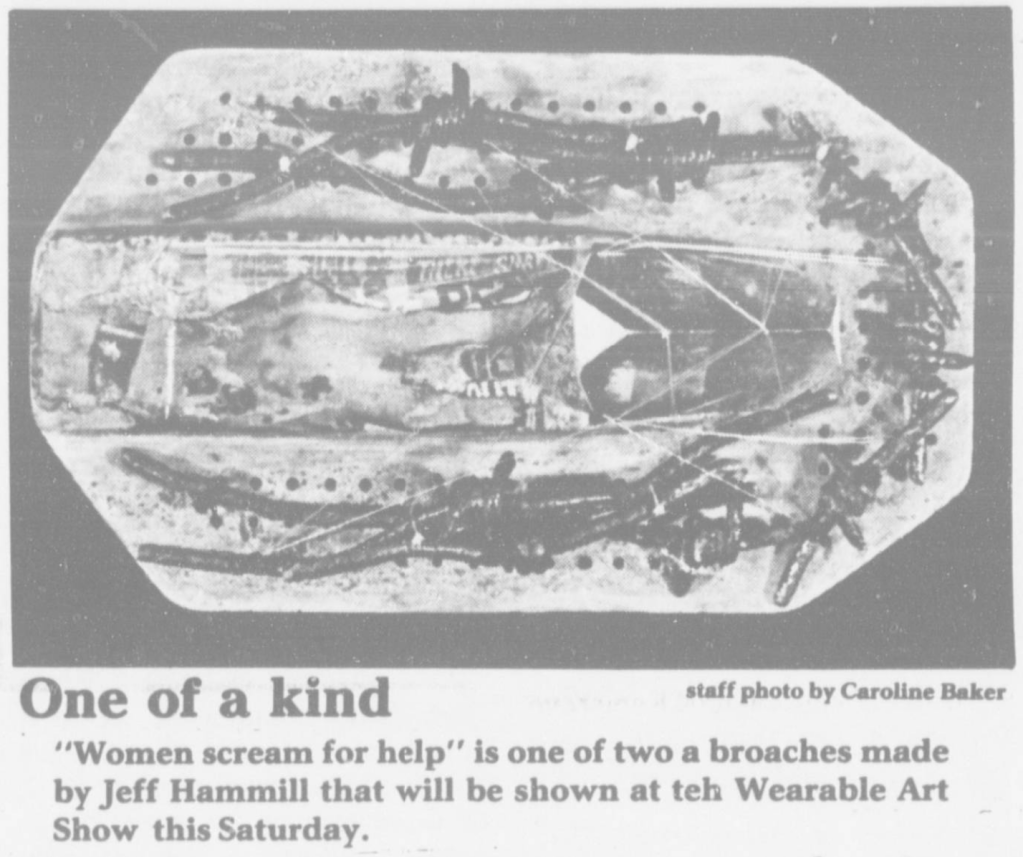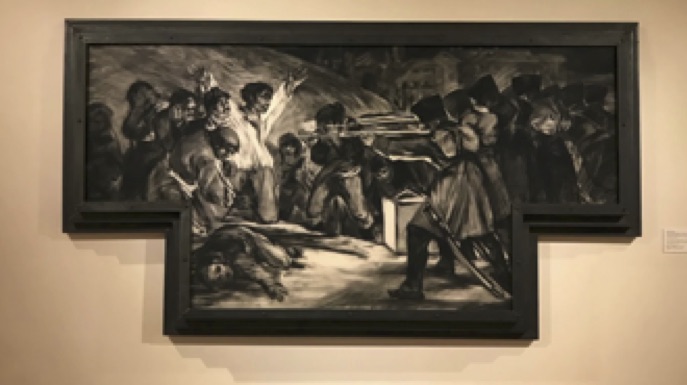In Fall 2020, students led by Associate Professor Louise Siddons created a digital project documenting the art exhibition history of Oklahoma State University, with the assistance of Digital Scholarship Librarian Megan Macken. Students used the digitized archive of the student newspaper, the Daily O’Collegian—today the O’Colly— to construct a database of exhibitions held between 1960 and 1999.
Here on the collection blog, we’re featuring reflective essays written by students about their work on this project, based on the research they did to compile the online exhibition history. This week’s essay is by Taylor Dawes. It has been edited for length and clarity.
The art exhibitions at Oklahoma State from 1990-1995 included a wide variety of themes. The themes showcased consisted of, but were not limited to: innovative and experimental art, pop culture, art history, graphic design, Mexican history, Russian history, and plenty more. This time period showcased several different style and subjects, but they all had one shared goal, which was to further the art experience at Oklahoma State. The purpose of each one was to share the ideas and motivations for the art with OSU and local communities.
The exhibitions included artwork created by students, faculty, and outside artists. However, the organization of the exhibitions was usually executed by faculty members in the art department. The Daily O’Collegian is a student-run newspaper at Oklahoma State that has historically covered details such as the location, date, and featured art of exhibitions. The Daily O’Collegian often included statements and opinions on the exhibitions from organizers—as when Gardiner Art Gallery director B.J. Smith described the gallery as “the best-kept secret on campus,” in 1994.
Within this time period, critical commentary was not offered by student journalists. If the newspaper included reactions from the audience, it was in the form of quotes from those who attended the exhibitions. For example, in an article from 1995, the Daily O’Collegian reporter, Emily Akers, included reactions from the director of the exhibition, a student in attendance, and even the judge of the exhibition. The O’Colly only included interviews a handful of times, but when they did, the reactions were exciting, positive, and eye-opening.
One exhibition that received a lot of attention at Oklahoma State was “James Drake: The Border/La Frontera.” According to reporter Caroline Baker, the exhibition was organized by the director of the Gardiner Art Gallery, B.J. Smith, and Gardiner staff. James Drake, an artist from El Paso, Texas, was the featured artist for this exhibition. His showcased art demonstrated multiple styles, such as a sculpture and drawings. His artwork was described as “dramatic” with its inclusion of “emotion, nudes, and guns” as well as a lack of “hope, freedom, or potential riches.”
The story within this art show was based around the lives of Mexicans fleeing to the United States. A piece of Drake’s titled Cinco de Mayo was created by steel and charcoal on paper. The picture shows a large group of Mexicans being held at gunpoint by law enforcement. This topic can be related to current events because the dangers of the border are still being experienced. Within the last four years, stricter immigration laws have been put into place within the United States, and the “struggle and death” is still the reality for some fleeing Mexicans.

Another 1990 exhibition shown at Oklahoma State, “Wearable Art,” can also be tied back into current events. A student by the name of Jeff Hammill won an art contest for his talented use of old “junk” in the creation of beautiful jewelry. Relevant current events that connect to this exhibition is the regular clothing drives held across our country. The ability of a college student to create beautiful jewelry out of unused, old material could open many doors of creating clothes for almost no cost. It’s a form of recycling old material, using it for those in need, and having the joy of creating a piece of artwork with a vision and purpose.
There have been exhibitions concerning Russian history, Mexican history, and American history, but I think the community surrounding Oklahoma State would enjoy looking at its own history. An exhibition of this kind would more than likely draw a crowd of current students along with proud alumni. The history of this college is important to current student, past students, families of students, professors, etc.
A current event that occurred during this time period that could be featured in such an exhibition is the tornado that brought damage to Stillwater in 1990. In fact, there was an art auction that took place in order to benefit the victims of the tornado. “Art Auction Benefit 1990” showed how the community used art to mend a painful time of recovery. This is obviously a crucial part of Oklahoma State history that could be represented in an exhibition. Ideas along with this include the history of the campus, professors, students, sports, and more.

